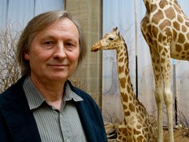
Phylogeny of Praomys daltoni
The murid rodent Praomys daltoni is widespread in Sudanian savanna and woodlands of West Africa, and previous study of mitochondrial DNA variability suggested that it encompasses the phenotypically (small, grey-bellied) and ecologically (commensal) distinct form, Praomys derooi. Here, we comprehensively examined the genetic and morphological diversity within the complex. Six mitochondrial lineages showed a fine-scale phylogeographical pattern, whereas delimitation based on nuclear loci pooled four of them into a single widespread unit. A newly discovered lineage from southern Mauritania stands apart from the rest of the complex and might represent an unrecognized species. At the same time, the internal position of P. derooi (C2 mitochondrial lineage) was confirmed by the multilocus analysis. The magnitude of genetic distances between major phylogeographical lineages was typical for interspecific divergence in other clades of Praomys, despite the little differences among them in morphology (skull and upper molar row shapes). The most pronounced morphological shift was associated with a transition to commensalism, especially in P. derooi, but also in other lineages. This makes the whole complex a suitable model for the study of phenotypic novelty, the evolution of commensalism and conditions for ecological speciation.






